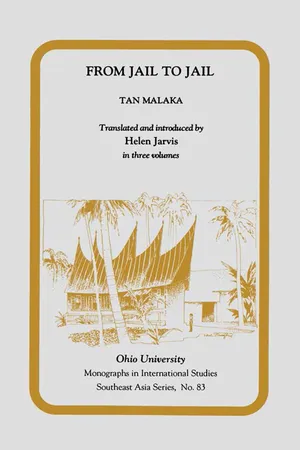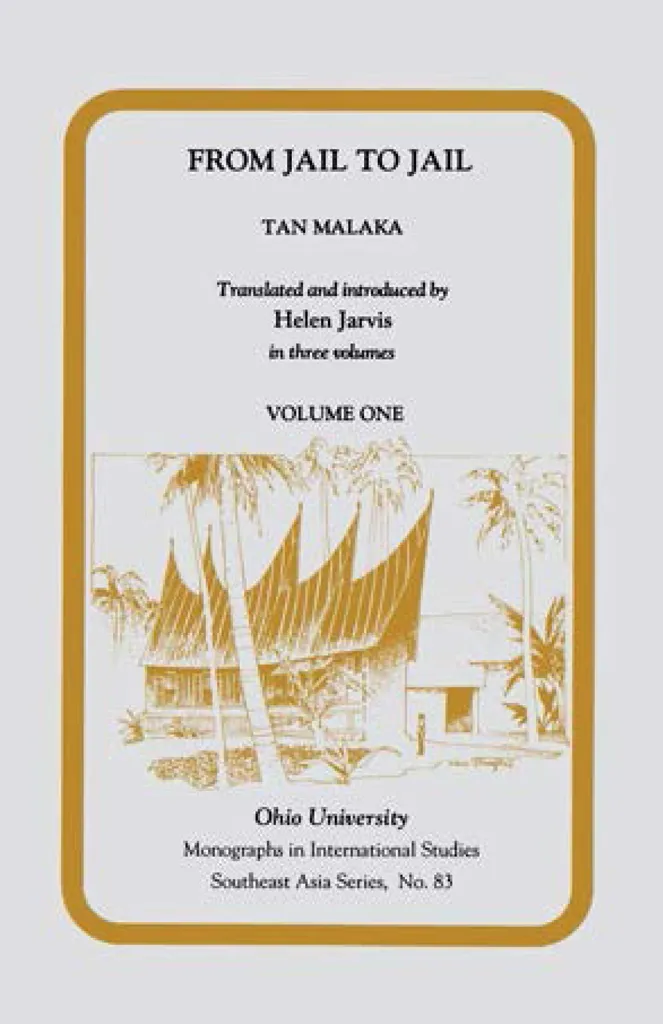![]()
![]()
INTRODUCTION
[3] Many of my comrades in the struggle, both inside and outside of jail, have long suggested that I write the story of my life. They say that my experiences can be instructive for the present and future heroes of our struggle for independence.
It was only a month or two ago that I agreed to this suggestion. Previously I had seen no possibility to do it. First of all, there was so much other work of far greater importance than portraying my own life, and that work had to be done quickly and with all my attention. Secondly, to write the story of my life spanning over a half a century—a life full of up and down and containing much more down than up—was not a part-time job.1 The final difficulty, of no less importance, was my own situation. My present certain loss of freedom, and my resultant uncertain future, was made even more difficult by my random transfers from place to place, sometimes to places that did not allow me to write at all. Furthermore, I was faced with the possibility that what I wrote later would be seized upon and used against me as the basis of a slander campaign by my enemies, who would not play fair. Considerations such as these initially made me want to leave my own history to history itself.
[4] But when I was assigned a quiet cell in Magelang prison, apart from the other prisoners, and I obtained a pencil, paper, and a table to write on, I thought of writing, if only to fill the time.2 At first I wanted to continue my work on ASLIA, which I had begun in 1942 in Jakarta.3 However, since I had neither a copy of the manuscript itself nor the important statistical material on economic and other matters that was attached to it, I was forced to delay even further this five-year-old project. That is how I was forced into writing these reminiscences.
This is not a life history in the strict sense of the usual chronology from childhood to adulthood, from schooldays to the time of social employment, such as is generally indicated in the title Life and Work. But I write nothing that is not based on fact and not part of the history of my life.
What I write here can later be compared with reality, and historians can see if anything was left out or added. Some of those people whose names I mention can be traced and questioned by those who wish to do so. If my story doesn’t tally exactly with the truth, it is the result of human error or memory rather than design.
What I write here is only a part of my life story. But it is a part I consider not to be less important because of its close connection with my efforts to realize the desire for independence in both the political and economic sense. I focus this story on several prisons, and so I shall describe the events surrounding each of these prison episodes.
Thus I tell the story of what happened before, during, and after my imprisonment in the Dutch East Indies, the Philippines, Hong Kong, and the Republic of Indonesia. Perhaps this work will be divided into two volumes. If so, then the first volume will deal only with the prisons of the Dutch East Indies and the Philippines.4
It is obvious that my efforts to fulfill the duty of demanding independence—both for the people of Indonesia as a whole and for myself—were opposed by Dutch, American, and British imperialism. This neither surprised nor disappointed me. On the contrary, I felt happy to see that international imperialism regarded the struggles of the Indonesian people as significant. I believe that once all these obstacles are overturned and 100 percent independence is achieved, the security, prosperity, and happiness of the independent Indonesian people will be guaranteed. All the physical and spiritual forces awakened and used in overcoming these obstacles will take new forms and become forces of development and preservation. The more these forces are required and utilized, the firmer will be the future of the Indonesian people.
[5] I have entitled this book From Jail to Jail, and I believe that there is a relationship between jail and genuine freedom. Those who really want freedom for all must be ready and willing at every moment to suffer “the loss of their own freedom.”
Whoever wishes to be free must be ready to be jailed.5
Tan Malaka
Ponorogo prison6
September 1947
![]()
Chapter 1
THE STRUGGLE BETWEEN TWO FORCES
[7] It would not be incorrect to say that this natural world of ours is a battlefield for a never-ending struggle between negative and positive forces of essentially equal strength. Seen from another angle, these equal forces appear as repulsion and attraction.
Modern science seems to concentrate all branches of knowledge into physics and chemistry, which have the same essence: electricity. Here the continuous struggle between the two forces is very clear. But this perpetual conflict between negative and positive forces is found in all things. Even the atom, the smallest body of matter known to modern science, is the product of the struggle between these forces, in the form of electron and proton. And the same is true of the largest bodies in the universe. Planets, stars, comets, and suns are formed by negative-positive forces of attraction and repulsion acting over millions of years.
Shifting our point of view, let us take a lightning glance at the history of philosophy as it reflects the movement of social history. From Heraclitus and Democritus to Hegel and from Hegel to Marx and Engels we can observe the same struggle between two forces that we saw in the realm of nature. In philosophy this continuous and never-ending struggle is one of thesis and antithesis, giving rise to synthesis.
[8] In leaping so quickly from the field of science to that of philosophy, let us not lose sight of the basic difference between the two main schools of philosophy-idealism and materialism. Hegel’s dialectic is based on the Absolute Idea, while for Heraclitus, Democritus, and Marx and Engels the dialectic is based on matter.
For Hegel the Absolute Idea was what unceasingly drove forward the thesis and antithesis, producing the synthesis. With the right wing as the thesis, the left wing as the antithesis, the synthesis is the bird soaring high into space, never falling to earth . . . Affirmation, Negation, Negation of the Negation.1
In physics Heraclitus and Democritus never took flight from the real world.2 One of their accomplishments was the hypothesis of the existence of molecules and atoms. In their lifetime this could not be proved, as they had only the naked eye to use for observation, but some 2,500 years later, their hypothesis was verified by modern science through use of the microscope.3
The main accomplishments of the dialectic based on matter have been Marx’s discovery of the theory of surplus value in economics and Marx and Engels’ development of the theories of historical and dialectical materialism in philosophy.
It is not my intention in this small book to go into my philosophy of life, or Weltanschauung,4 which has already been dealt with in Madilog.5 The brief observation presented above was intended only to set the stage for a discussion of the struggle between negative and positive forces, between repulsion and attraction, between thesis and antithesis, in the world of law. I shall be dealing not with law in its wider sense, but with several specific cases, and not with law concerning the whole of society or even one particular group, but law as it relates specifically to myself.
In brief, I shall deal with the struggle between justice and tyranny on the battleground of my own person and life. This struggle, in its legal form, was played out by Dutch, American, and British imperialism, and finally by the Republic of Indonesia, which is supposedly based on belief in God, humanism, social justice, unity, sovereignty of the people . . . and all that.6
[9] I look at these acts wrought upon me not only with personal feelings but also with the recognition that this struggle exists throughout the universe. In my view, neither society as a whole, nor any given group within society, nor even a single individual can escape the action of these two forces—thesis and antithesis—on every aspect of life.
This small book tells my personal story of the interplay of thesis and antithesis.
![]()
Chapter 2
HUMAN RIGHTS
[10] Law as it relates to human rights covers an extremely wide area.1 This is not the place, nor is it my intention here, to analyze all human rights one by one. What I shall touch on is only that part especially concerned with regulations for the self-preservation of members of society.
In order to be aware of the place held by the right to self-preservation in law, it is well to have a quick view of the whole body of law relating to human rights. This is not a difficult task if we follow the method used above in viewing the natural world, separating the positive from the negative, what attracts from what repels.
There are two great forces that move the soul of every living thing, including human beings. The first is the will to live, and the second is the will not to die. If we term the first will positive, then the second clearly is negative. If human will generally attracts and pulls towards the first, then it rejects the second. In the concrete, everyday sense, the first force serves to find the means to live—food, drink, clothing, accommodation, and so forth—while the second serves to ward off the dangers of sickness and hunger.
[11] The struggle for rights means the struggle to seize these positive and negative rights, as embodied in the Magna Carta and The Rights of Men in Anglo-Saxon law;2 in Les Droits des Hommes, the basis of French law; and finally in the right to work in Soviet Russia. The struggles to secure these rights in England, America, France, and Russia were not individual struggles, but group ones, undertaken to avoid danger and to secure well-being for the gr...

